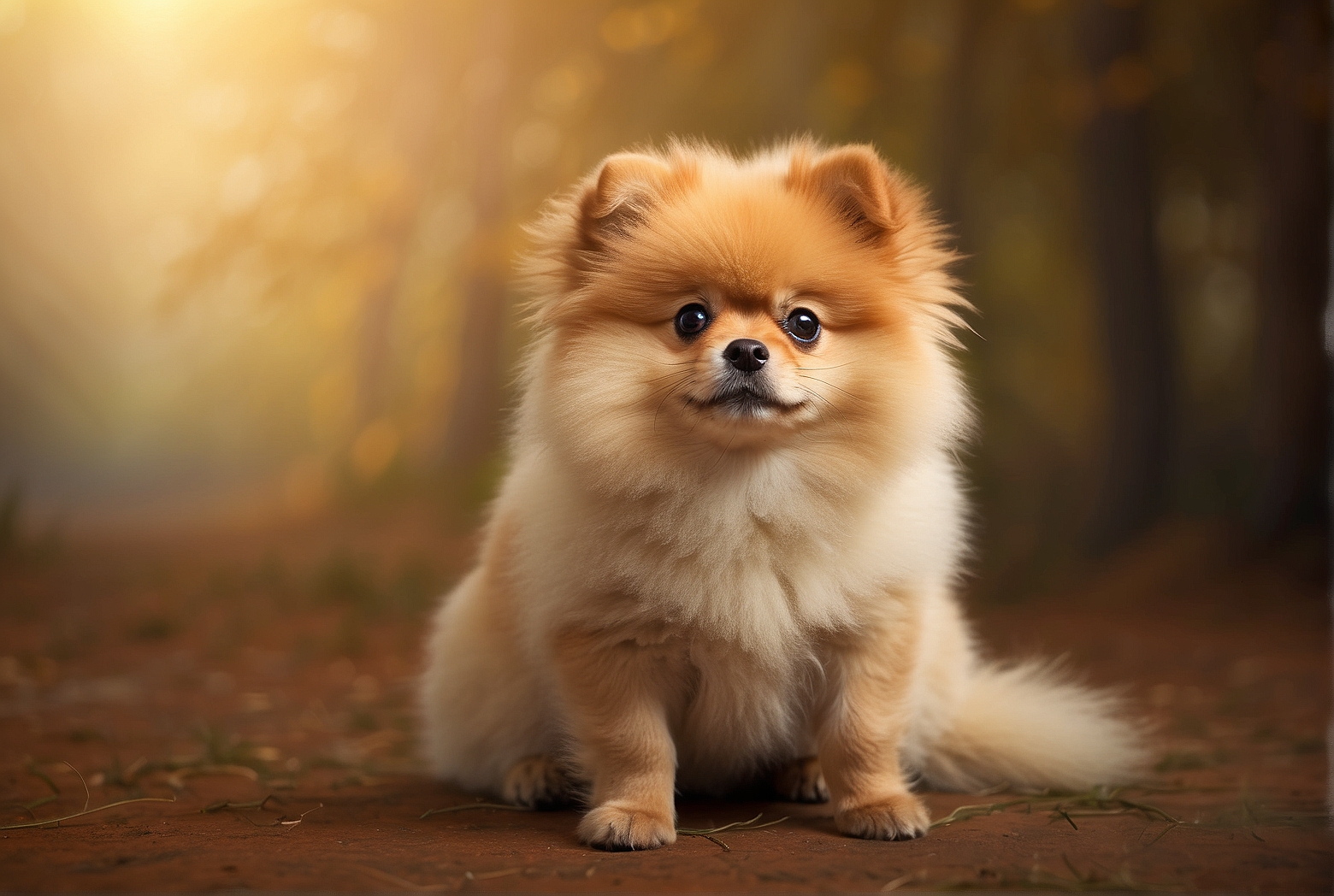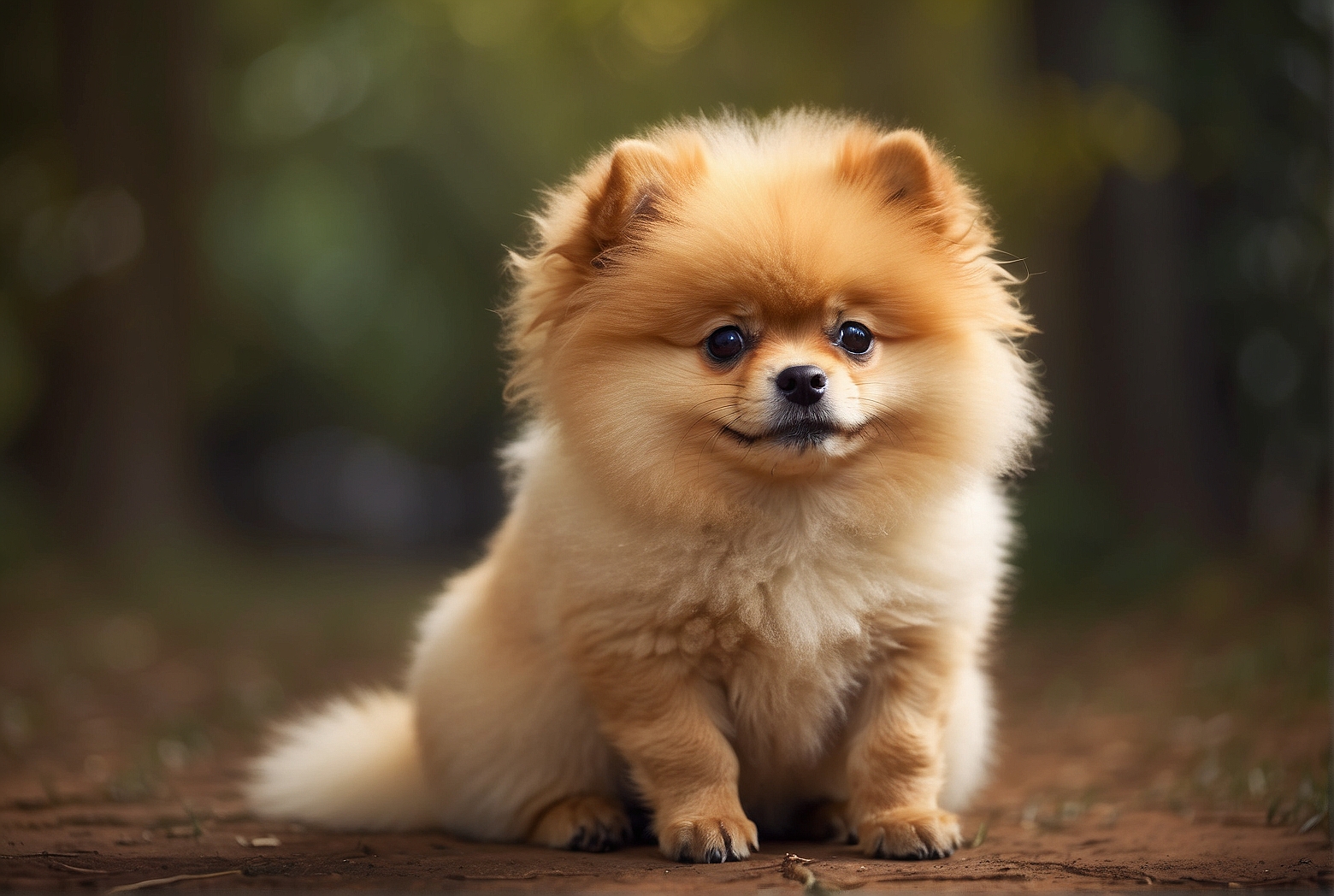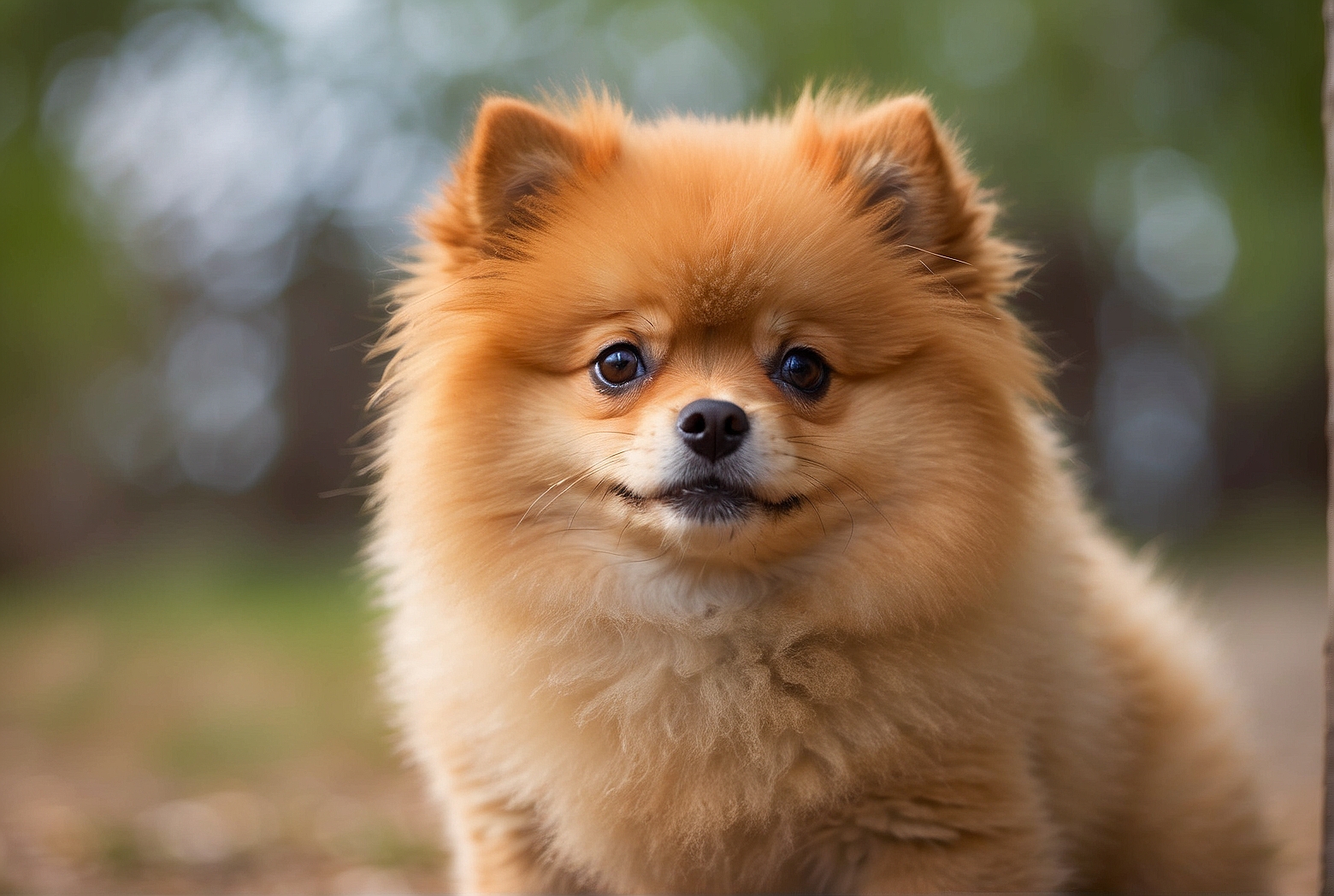Have you ever wondered at what age Pomeranians start showing their protective side? Pomeranians, known for their fluffy coats and adorable appearances, can also display a strong instinct to protect their loved ones. In this article, we will explore the development of this protective behavior in Pomeranians, providing you with a better understanding of when and how it manifests. Additionally, we will touch upon the Great Dane dog breed, offering a brief glimpse into their characteristics. So, if you’re a Pom lover or simply curious about canine behavior, keep reading to uncover the fascinating journey of when Pomeranians become protective.
Introduction
Welcome to this comprehensive guide on understanding the protective nature of Pomeranians. If you have a Pomeranian or are considering getting one, it’s important to know about their inherent protectiveness and how to handle it in a balanced and healthy way. In this article, we will explore the personality traits of Pomeranians, the factors that affect the development of protectiveness, signs of protective behavior, training techniques, common challenges, and how to handle them safely. By the end of this article, you will have a better understanding of how to raise a protective Pomeranian while maintaining a friendly and well-rounded companion.
Understanding the Protective Nature of Pomeranians
Personality Traits of Pomeranians
Pomeranians are known for their big personalities packed into a small package. Despite their small size, they often exhibit a protective nature towards their owners and territory. This protective instinct can be attributed to their origins as sled dogs and their close genetic relation to larger spitz-type breeds. Pomeranians are loyal, attentive, and highly alert, making them excellent watchdogs. They are naturally cautious around strangers and will not hesitate to alert their owners of potential threats.
Training and Socialization Impact on Protectiveness
Proper training and socialization play a crucial role in shaping a Pomeranian’s protectiveness. Early and consistent training helps establish boundaries and teaches them appropriate responses to different situations. Socialization, on the other hand, exposes Pomeranians to various people, animals, and environments, reducing their tendency to become overly protective or fearful. By combining positive reinforcement techniques with socialization, owners can help their Pomeranians become well-rounded, confident, and appropriately protective companions.
Factors Affecting the Development of Protectiveness
Genetics and Breed Tendencies
Protectiveness in Pomeranians can be partially attributed to their genetic makeup and breed tendencies. As descendants of larger working dogs, Pomeranians inherit a natural instinct to protect their owners and territory. However, the degree to which this instinct manifests varies among individuals. Some Pomeranians may exhibit stronger protectiveness, while others may be more laid-back. Understanding their genetic predisposition can help owners navigate their dog’s protective behavior more effectively.
Environmental Factors
The environment in which a Pomeranian is raised also plays a significant role in their development of protectiveness. Puppies who are exposed to a variety of people, animals, and situations during their critical socialization period tend to be more well-adjusted and less prone to overprotectiveness. Conversely, a lack of exposure or negative experiences during this crucial time can lead to fear-based protectiveness or aggression in Pomeranians.

Owner’s Role in Shaping Protectiveness
Owners have a considerable influence on their Pomeranian’s development of protectiveness. How owners handle their dog’s protective behavior, the consistency of training, and the level of socialization they provide all factor into how the protectiveness manifests. It is important for owners to strike a balance between encouraging their Pomeranian’s natural instincts and ensuring they respond appropriately to different situations. Consistent and positive reinforcement training techniques can help shape protectiveness into a desirable trait.
Protectiveness in Pomeranians: A Developmental Timeline
Early Puppyhood
Pomeranian puppies start to exhibit signs of protectiveness as early as eight weeks old. During this time, they may become alert and aware of their surroundings, barking at unfamiliar sights or sounds. It is essential to expose them to new experiences, people, and other animals in a positive and controlled manner to build their confidence and reduce the likelihood of fear-based protectiveness.
Adolescence
As Pomeranians enter adolescence at around six months to a year old, their protectiveness may become more pronounced. They may show possessiveness over toys or territory, becoming more alert and vocal. This stage is crucial for reinforcing positive training and socialization exercises to ensure their protectiveness remains balanced and well-directed.
Adulthood
By the time Pomeranians reach adulthood, typically at around two years old, their protective instincts should be well-established. They will exhibit consistent alertness to potential threats and a desire to guard their owners and territory. With proper training and a structured environment, owners can effectively channel this protectiveness into appropriate behaviors while maintaining a friendly and well-rounded companion.
Signs of Protective Behavior in Pomeranians
Barking and Alertness
One of the most common signs of protectiveness in Pomeranians is excessive barking and heightened alertness. They may sound the alarm at unfamiliar noises or people approaching their territory. While this behavior is a natural part of their protective instinct, it is important for owners to differentiate between genuine threats and harmless situations to prevent excessive barking.
Possessiveness over Toys or Territory
Pomeranians who are protective may develop possessiveness over their toys or territory. They can become vigilant about guarding their belongings, growling or even snapping if someone approaches. It is crucial for owners to establish clear boundaries and teach their Pomeranians proper behavior around possessions to prevent possessiveness from escalating into aggression.

Guarding Behavior
Guarding behavior, such as standing between their owner and a perceived threat, is another sign of protectiveness in Pomeranians. They may exhibit body language like raised fur, a stiff posture, or a deep growl to communicate their intent to protect. While this behavior can be desirable, it should be directed and controlled through training and positive reinforcement to prevent aggression towards strangers or other animals.
Balancing Protectiveness and Aggression
Recognizing the Difference
It is important for owners to recognize the difference between protectiveness and aggression in Pomeranians. Protectiveness is a natural instinct to guard and alert their owners, while aggression involves intent to harm or display dominance. If a Pomeranian’s protectiveness escalates into aggression, it becomes a behavioral issue that requires corrective training and behavior modification techniques.
Preventing Aggressive Tendencies
To prevent aggressive tendencies in protective Pomeranians, owners must establish clear boundaries and reinforce positive behavior from an early age. Consistent, reward-based training that focuses on obedience and reliable commands helps to establish control and prevent protectiveness from turning into aggression. Early socialization also plays a crucial role in reducing fear-based or aggressive behaviors.
Training Pomeranians to Be Protective
Socialization for a Well-Rounded Dog
Socialization is a vital aspect of training protective Pomeranians. It exposes them to different people, animals, environments, and experiences in a controlled and positive manner. Introducing them to new sights, sounds, and situations helps build their confidence, reduces fear-based protectiveness, and creates a well-rounded dog who can differentiate between genuine threats and everyday occurrences.
Teaching Obedience and Reliability
For Pomeranians to be effectively protective, they must also be obedient and reliable. Basic obedience training, such as teaching commands like “sit,” “stay,” and “come,” ensures they listen to their owner’s instructions, promoting control in potentially stressful situations. Consistent positive reinforcement training methods and rewards help establish trust between the owner and their Pomeranian, reinforcing their protective instincts in a controlled and desirable way.
Specific Protective Training Techniques
Owners who wish to further enhance their Pomeranian’s protective instincts can opt for specialized protective training techniques. These techniques include teaching their Pomeranian to bark on command, to stay alert and attentive, and to effectively communicate potential threats. Such training should be conducted under the guidance of professional dog trainers to ensure the safety and well-being of both the Pomeranian and those around them.
Common Challenges in Raising a Protective Pomeranian
Fear-Based Protectiveness
Some Pomeranians may develop fear-based protectiveness due to traumatic experiences or a lack of socialization. This can lead to aggressive behavior towards strangers or fear-driven reactions. Addressing fear-based protectiveness requires a gradual desensitization process, exposure to positive experiences, and the guidance of a professional trainer to help rebuild trust and confidence.
Behavioral Issues
Protective Pomeranians may exhibit behavioral issues such as resource guarding, separation anxiety, or even aggression. It is crucial for owners to address these issues promptly and seek the assistance of qualified dog behaviorists or trainers who specialize in working with protective breeds. With proper intervention and training, many behavioral issues can be managed or resolved effectively.
Managing Protectiveness in Multi-Dog Households
In multi-dog households, managing the protectiveness of Pomeranians can present additional challenges. Introducing protective Pomeranians to other dogs requires careful socialization to prevent territorial aggression or possessiveness over resources. Providing individual attention, fair treatment, and clear boundaries for each dog can help maintain a harmonious and balanced environment.
Handling Protective Pomeranians Safely
Approaching Strangers
When encountering strangers, it is important to approach Pomeranians in a calm and non-threatening manner. Owners should communicate their dog’s protectiveness to others and provide clear instructions to prevent any unwanted incidents. Proper training and socialization will help Pomeranians differentiate between genuine threats and harmless situations, reducing their instinctual protectiveness.
Children and Other Pets
In households with children and other pets, it is essential to supervise interactions between a protective Pomeranian and younger family members or unfamiliar animals. Educating children about appropriate boundaries and teaching them how to interact safely with the dog can prevent any potential conflicts. Introducing new pets gradually and under controlled circumstances allows for a positive and successful integration.
Visitors and Guests
When hosting visitors or guests, it is important to prepare protective Pomeranians in advance. Providing a safe space for the dog to retreat to, such as a crate or a designated area, can help manage their protectiveness during the visit. Clear instructions should be given to visitors regarding the dog’s behavior and any boundaries they need to respect. By managing interactions thoughtfully, owners can ensure a safe and pleasant environment for all.
Conclusion
Pomeranians possess a natural instinct to protect their owners and territory, making them excellent watchdogs. Understanding the factors that affect the development of protectiveness and recognizing the signs of protective behavior is crucial for responsible ownership. By providing proper training, socialization, and guidance, owners can shape their Pomeranians’ protectiveness into a desirable and balanced trait. Remember, nurturing a protective Pomeranian is about fostering their natural instincts while promoting positive interactions and maintaining a friendly and well-rounded companion.
